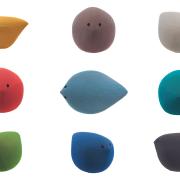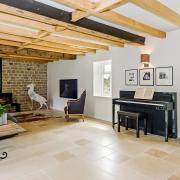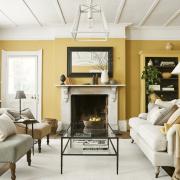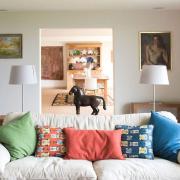Creating a bedroom for your child is one of the most fun-filled decorating jobs you can undertake. However, there are a few simple rules to follow unless you want to be re-decorating every five seconds.

Children’s tastes and interests change much faster than adults, so achieving a room that is adaptable is the key. A child’s bedroom needs to be not only a place to sleep but, as they grow, a study area, social club, playroom and hideaway; so take the time to plan for all the transitions that will be required.
I suggest you plan about three years in advance. Avoid those dinky-size toddler bed - before you know it their feet will be hanging over the end. While they may start off looking tiny tucked into an antique sleigh bed or the bottom of a big bunk, it will see them through a good few years. Bunk beds in particular are a good choice even for a single occupancy room. Space-saving, fun and inviting, bunk beds are perfect for sleepovers, they readily adapt from toddler to teenager.
The same apply to storage. The average child brings with him or her several times their own bodyweight in ‘stuff’ in the form of toys, books, clothes and kit, so storage, storage and more storage is required. Don’t be tempted by cute, tiny wardrobes and bookshelves. Buy normal size and paint them every so often in the current favourite zingy colour. But always make sure you provide some things like hooks and shelves at child height if you expect them to keep things tidy.
A child’s room is a great opportunity to go wild with colour - children love colour and are uninhibited by constraints of ‘good taste’! However, I would caution against painting an entire room bubblegum pink or bright blue - it will not be long before they pronounce it ‘babyish’. The easiest way to inject colour is either to paint or paper one wall only in their favourite shade, which can be more easily updated, or, to opt for a neutral backdrop and allow the toys and accessories to do the talking colour-wise.
A loose theme can be achieved with accessories in particular colours. There are some fantastic bed linens, cushions and rugs in cool designs, that won’t cost much to replace every so often. The trick is to keep everything bright, breezy and instantly removeable, which makes wall stickers another great way to add some interest to walls.
I’ve found that children love to be involved in decorating decisions for their rooms. Giant letters spelling their names on the wall, or painted onto the door will personalise the space, as will stringing their artwork from wall to wall. Encourage their creativity – an area covered in blackboard paint (which is available in multi-colours) is a firm favourite for budding artists or try attaching a sheet of galvanized metal to the wall as an instant magnetic board.
Finally, I think it’s important to create an heirloom. A patchwork quilt, a miniature wooden chair or a handmade toy –a permanent piece that endures through childhood and can be handed on to the next generation, something that memories are made of.
Colours for Children’s Rooms
Decorating children’s rooms can be tricky as their tastes change like the wind. We’ve found that the key to decorating young people’s rooms, from nurseries to teenage bedrooms, is to use colours and patterns that will grow with them, which can be easily adapted and updated for a new look as and when.
For example, if you have a little girl who is determined that only pink will do, but you know she may well grow out of the ‘pink phase’ as soon as you’ve put down the paint brush, why not compromise by using a neutral colour like Great White on the walls and ceilings and painting the door, woodwork and accessories in Cinder Rose? That way, when she’s moved on to other colours, it will be easier for you to update her room.
Wallpaper is also an interesting addition to consider, a feature wall of wallpaper is often a popular choice among parents as it’s easy to update as children grow in age as well as sophistication.
To create a calming and soothing atmosphere, the subtle tones and interesting pattern of Vermicelli is great for nurseries; stimulating young babies and helping to lull them off to the land of nod. Wallpaper also works well across all ages, for example, Bumble Bee is a great way to create an animal friendly room for younger children whereas Ocelot is a great choice for teenagers who want to make a statement.
Children’s playrooms and dens are a great place to be bold and have fun with colour. Bright colours like Rectory Red, Charlotte’s Locks, Yellowcake, St Giles Blue and Arsenic will add vibrancy to a room and create pops of colours. Use these colours on stools, chairs and tables to create a happy environment for your child to play in. Happy painting!
Sarah Cole, Director - farrow-ball.com***
To see this article and its images in full, click here and go to page 80.



























